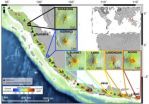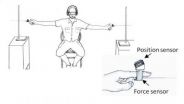(Press-News.org) CHICAGO – In a randomized study that included nearly 15,000 male physicians who were middle-aged or older, daily multivitamin use for more than 10 years of treatment and follow-up did not result in a reduction of major cardiovascular events, heart attack, stroke, or death from cardiovascular disease, according to a study appearing in November 7 issue of JAMA, a theme issue on cardiovascular disease. The study is being released early online to coincide with its presentation at the American Heart Association's Scientific Sessions.
"Despite uncertainty regarding the long-term health benefits of vitamins, many U.S. adults take vitamin supplements to prevent chronic diseases or for general health and well-being," according to background information in the article. Individuals who believe they are deriving benefits from supplements may be less likely to engage in other preventive health behaviors. "Although multivitamins are used prevent vitamin and mineral deficiency, there is a perception that multivitamins may prevent cardiovascular disease (CVD). Observational studies have shown inconsistent associations between regular multivitamin use and CVD, with no long-term clinical trials of multivitamin use."
Howard D. Sesso, Sc.D., M.P.H., of Brigham and Women's Hospital and Harvard Medical School, Boston, and colleagues analyzed data regarding multivitamin use and major cardiovascular events from the Physicians' Health Study (PHS) II, a large-scale trial testing the effects of long-term use of a common multivitamin on the risk of major cardiovascular events and cancer. The Physicians' Health Study II is a randomized, placebo-controlled trial that began in 1997 with continued treatment and follow-up through June 1, 2011. A total of 14,641 male U.S. physicians initially 50 years of age or older (average, 64 years), including 754 men with a history of CVD at randomization, were enrolled. This analysis measured the composite end point of major cardiovascular events, including nonfatal myocardial infarction (MI; heart attack), nonfatal stroke, and death from CVD. Secondary outcomes included heart attack and stroke individually. Participants were randomized to multivitamin (n = 7,317) or placebo (n = 7,324).
During a median (midpoint) follow-up of 11.2 years, 1,732 men had major cardiovascular events, including 652 cases (first events) of heart attack and 643 cases of stroke, and 829 men had cardiovascular death, with some men experiencing multiple events. A total of 2,757 (18.8 percent) men died during follow-up (multivitamin, n = 1,345; placebo, n = 1,412). In an analysis of the rate of events for men in each group, the researchers found that there was no significant effect of a daily multivitamin on major cardiovascular events, or total MI or total stroke. Taking a daily multivitamin was not significantly associated with a reduction in CVD mortality. There were fewer total deaths among multivitamin users, but this difference was not statistically significant.
The authors also found no significant effect of a daily multivitamin on rates of congestive heart failure, angina, and coronary revascularization. Also, the effect of a daily multivitamin on total MI, total stroke, and other cardiovascular end points did not differ between men with and without CVD at the beginning of the study.
"The PHS II represents to our knowledge the only large-scale, randomized, double-blind, placebo-controlled trial testing the long-term effects of a commonly available multivitamin in the prevention of chronic disease," the authors write. "These data do not support multivitamin use to prevent CVD, demonstrating the importance of long-term clinical trials of commonly used nutritional supplements. Whether to take a daily multivitamin requires consideration of an individual's nutritional status, because the aim of supplementation is to prevent vitamin and mineral deficiency, plus consideration of other potential effects, including a modest reduction in cancer and other important outcomes in PHS II that will be reported separately."
(JAMA.2012;308[17]:1751-1760. Available pre-embargo to the media at http://media.jamanetwork.com)
Editor's Note: This study was supported by grants from the NIH and an investigator-initiated grant from BASF Corporation. Study agents and packaging were provided by BASF Corporation and Pfizer (formerly Wyeth, American Home Products, and Lederle), and study packaging was provided by DSM Nutritional Products Inc. (formerly Roche Vitamins). Please see the article for additional information, including other authors, author contributions and affiliations, financial disclosures, etc.
Editorial: Multivitamins in Prevention of Cardiovascular Disease
In an accompanying editorial, Eva M. Lonn, M.D., M.Sc., of McMaster University and Hamilton General Hospital, Hamilton, Ontario, Canada, writes that "robust data from multiple trials clearly confirm that CVD cannot be prevented or treated with vitamins."
"Nonetheless, many people with heart disease risk factors or previous CVD events lead sedentary lifestyles, eat processed or fast foods, continue to smoke, and stop taking lifesaving prescribed medications, but purchase and regularly use vitamins and other dietary supplements, in the hope that this approach will prevent a future myocardial infarction or stroke. This distraction from effective CVD prevention is the main hazard of using vitamins and other unproven supplements. The message needs to remain simple and focused: CVD is largely preventable, and this can be achieved by eating healthy foods, exercising regularly, avoiding tobacco products, and, for those with high risk factor levels or previous CVD events, taking proven, safe, and effective medications."
(JAMA.2012;308[17]:1802-1803. Available pre-embargo to the media at http://media.jamanetwork.com)
Editor's Note: The author has completed and submitted the ICMJE Form for Disclosure of Potential Conflicts of Interest and reported serving as a consultant to Merck and Servier; providing expert testimony for Merck; receiving grants or grants pending from AstraZeneca, GSK, and Hoffman Laroche; and receiving payment for lectures from Novartis and Merck.
###
To contact Howard D. Sesso, Sc.D., M.P.H., call Tom Langford at 617-534-1605 or email tlangford@partners.org. To contact Eva M. Lonn, M.D., M.Sc., call Veronica McGuire at 905-525-9140, ext. 22169; or email vmcguir@mcmaster.ca.
END
CHICAGO – In an examination of the incidence of coronary heart disease (CHD) in the U.S. by race and sex, black men and women had twice the rate of fatal CHD compared with white men and women, with this increased risk associated with a greater prevalence of CHD risk factors, according to a study appearing in November 7 issue of JAMA, a theme issue on cardiovascular disease. The study is being released early online to coincide with the American Heart Association's Scientific Sessions.
"Although mortality rates for acute myocardial infarction [MI; heart attack] and coronary ...
CHICAGO – In a study that involved more than 16,000 Hispanic/Latino men and women living in the United States, the prevalence of major cardiovascular disease (CVD) risk factors was high and varied markedly across different background groups; and those born in the U.S. were more likely to report a history of coronary heart disease and stroke and to have multiple CVD risk factors, according to a study appearing in November 7 issue of JAMA, a theme issue on cardiovascular disease. The study is being released early online to coincide with the American Heart Association's Scientific ...
MIAMI – November 5, 2012 -- A new study by scientists at the University of Miami (UM) Rosenstiel School of Marine & Atmospheric Science uses Interferometric Synthetic Aperture Radar (InSAR) data to investigate deformation prior to the eruption of active volcanoes in Indonesia's west Sunda arc. Led by geophysicist Estelle Chaussard and UM Professor Falk Amelung, the study uncovered evidence that several volcanoes did in fact 'inflate' prior to eruptions due to the rise of magma. The fact that such deformation could be detected by satellite is a major step forward in volcanology; ...
Boulder, CO, USA – In communities across the U.S., people are hearing more and more about a controversial oil and gas extraction technique called hydraulic fracturing – aka, hydro-fracking. Controversies pivot on some basic questions: Can hydro-fracking contaminate domestic wells? Does it cause earthquakes? How can we know? What can be done about these things if they are true? A wide range of researchers will address these and related critical questions at the GSA Annual Meeting this week.
"When people talk about contamination from hydraulic fracturing, for instance, ...
Boulder, CO, USA – Not very long ago a professional geologist's field kit consisted of a Brunton compass, rock hammer, magnifying glass, and field notebook. No longer. In the field and in the labs and classrooms, studying Earth has undergone an explosive change in recent years, fueled by technological leaps in handheld digital devices, especially tablet computers and cameras.
Geologist Terry Pavlis' digital epiphany came almost 20 years ago when he was in a museum looking at a 19th-century geology exhibit that included a Brunton compass. "Holy moly!" he remembers thinking, ...
Rats use a sense that humans don't: whisking. They move their facial whiskers back and forth about eight times a second to locate objects in their environment. Could humans acquire this sense? And if they can, what could understanding the process of adapting to new sensory input tell us about how humans normally sense? At the Weizmann Institute, researchers explored these questions by attaching plastic "whiskers" to the fingers of blindfolded volunteers and asking them to carry out a location task. The findings, which recently appeared in the Journal of Neuroscience, have ...
Autosomal-dominant polycystic kidney disease (ADPKD) is one of the most common genetic disorders, affecting one in every 1,000 people and responsible for up to ten percent of patients on dialysis worldwide. The disease is characterized by the development of cysts that lead to progressive kidney failure and necessitate dialysis or a kidney transplant in most patients aged around fifty. Moreover, the persistent cyst growth causes high blood pressure and painful complications. Although we have known about the disease for over a century and its genetic basis for almost 20 years, ...
Hispanics and Latinos living in the U.S. are highly likely to have several major cardiovascular disease risk factors, such as high cholesterol, high blood pressure, obesity, diabetes, and smoking, according to a new, large-scale study. Risks vary among the diverse Hispanic/Latino groups, but individuals who were born in the U.S. are more likely to have multiple risk factors.
The findings are reported in the Nov. 7 issue of JAMA.
Hispanic and Latino people now comprise the largest minority group in the U.S. Although this population is relatively young, cardiovascular ...
The patients have single short fingers (metacarpals) and toes (metatarsals) and can be restricted in growth due to a shortened skeleton. This hereditary disease is called brachydactyly type E (Greek for short fingers). Three years ago Dr. Philipp G. Maass from the research group of Professor Friedrich C. Luft at the Experimental and Clinical Research Center (ECRC), a joint cooperation between the Charité Medical Faculty and the Max Delbrück Center for Molecular Medicine (MDC) in Berlin-Buch, has discovered an epigenetic mechanism, which, when dysregulated, causes this condition. ...
Europeans spend much time with their grandchildren. And past 70, the grandfather takes the lead.
Norwegian sociologist Knud Knudsen sets great store by his grandchildren. In that respect, he is typical of the grandparents in Europe who are the subjects of his recent research.
"Europeans with grandchildren generally opt to spend a good deal of time with them," says 67-year-old Knudsen, who is professor of sociology at the University of Stavanger (UiS).
"And grandfathers appear to be more involved than before," he adds. In a new study, he found that grandmothers are ...

